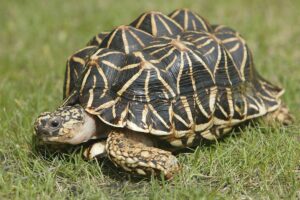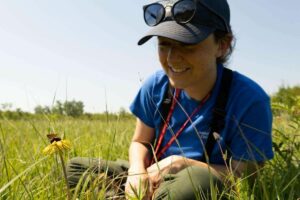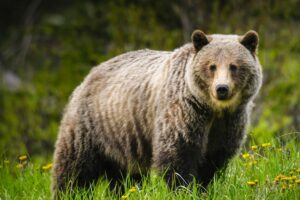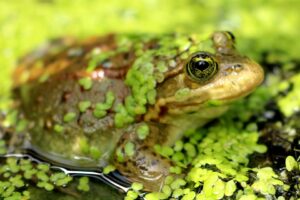CAZA Conservation
Conservation at CAZA
Conservation is a fundamental principle for CAZA-accredited institutions. CAZA facilities lead the way by collaborating with numerous government agencies, post-secondary institutions and non-government agencies, to enhance wildlife and plant conservation efforts. Through the work of our Conservation Committee, CAZA is bringing its members together to provide a crucial platform to cultivate networking and joint initiatives among accredited institutions and stakeholders.
Ex Situ Conservation
Ex situ conservation is a biodiversity conservation strategy where plant or animal species are protected outside of their natural habitat. It involves maintaining and breeding species in controlled environments like zoos, botanical gardens, and seed banks. The goal is to safeguard threatened species, maintain genetic diversity, and potentially support reintroduction efforts into their natural habitats.
Common Roles of Ex Situ Conservation
An ex situ population can serve as a source of individuals to re-establish a species to areas of its former range from which it has disappeared. Having multiple, resilient populations distributed across the species’ range improves its ability to withstand catastrophic events.
Example:
 Greater Vancouver Zoo, BC: Taylor’s Checkerspot Butterfly
Greater Vancouver Zoo, BC: Taylor’s Checkerspot Butterfly
By using a mix of wild-caught and captive born butterflies we create a population to inhabit the habitats we work to restore. Animals are reared until they are deemed old enough to survive in the wild and then released into their protected habitats. By helping them through their most vulnerable life stage the more mature animals have a much better chance of surviving.
Learn more about the Greater Vancouver Zoo's Checkerspot Butterfly Conservation Program.
Ex situ populations help researchers learn things that can directly support a species’ survival. Sometimes, a non-threatened species is studied as a stand-in to better understand how to help a threatened one. In other cases, keeping a threatened species in human care allows experts to learn how to properly care for and breed them—knowledge that might be needed to help save the species in the future.
Example:
 African Lion Safari, ON: Asian Elephant research program
African Lion Safari, ON: Asian Elephant research program
Elephant Endotheliotropic Herpesvirus (EEHV) is a type of herpesvirus which can cause fatal hemorrhagic disease in wild elephants and elephants in human care. African Lion Safari has been instrumental in pursuing the latest EEHV monitoring, detection and treatment protocols. We have joined other elephant care facilities and researchers throughout the world in actively supporting a global multi-faced EEHV research effort. It is our hope that our results will lead to advances that will give veterinarians and elephant care professionals more tools and strategies needed to prevent, diagnose and treat EEHV.
Ex situ populations can be used to train people—like field biologists or wildlife managers—in important skills such as safely handling animals or checking their health. This training helps prepare them to work with wild animals and supports overall conservation efforts. Sometimes, a non-threatened species is used for training to help protect a similar, threatened species.
Example:
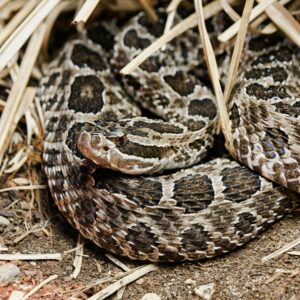 The ex situ population of Eastern massasauga rattlesnake (Sistrurus catenatus) that forms the Association of Zoos and Aquariums Species Survival Plan managed breeding population is used to train professionals in safe-handling procedures.
The ex situ population of Eastern massasauga rattlesnake (Sistrurus catenatus) that forms the Association of Zoos and Aquariums Species Survival Plan managed breeding population is used to train professionals in safe-handling procedures.
An ex situ population can serve as a source to supplement an existing population, helping to restore a self-sustaining and viable wild population.
Example 1:
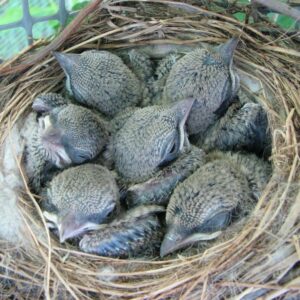 African Lion Safari, ON and Parc Omega, QU; Eastern Loggerhead Shrike Demographic augmentation.
African Lion Safari, ON and Parc Omega, QU; Eastern Loggerhead Shrike Demographic augmentation.
African Lion Safari became a partner in conservation efforts in 2008. The park is one of six conservation breeding centers, along with Parc Omega which joined the project in 2023, breeding a small population of Loggerhead Shrike and releasing young into the wild. The addition to the wild population with birds produced from this program has kept the species from disappearing in Ontario. African Lion Safari’s participation has also helped advance the understanding of genomics, migration routes and wintering grounds, the impact of threats faced by wild birds such as West Nile Virus, courtship and pairing of birds, and developed methods to more accurately differentiate males from females.
Learn more about the Eastern Loggerhead Shrike Conservation Programme.
Example 2:
 Little Rays Nature Centers, ON: Wood Turtle Headstarting
Little Rays Nature Centers, ON: Wood Turtle Headstarting
Exciting news from the Little Ray's team in Canada! In 2023, they welcomed their first North American wood turtle neonates to raise up in the safety of their care for release at a larger and more resilient size. They welcomed more the following year and plan to continue each year going forward! Their head-starts are reaching about the size of a wild five year old in a single year, giving them a significant advantage for survival than an individual left to fend for itself in the wild. After two winters in their care they will be released with enough time to become familiar with their habitat and prepare for winter on their own. This is a species that we know will not continue to survive in Ontario without significant and drastic intervention.
An ex situ population can form the basis for an education and awareness program that addresses specific threats or constraints to the conservation of the species or its habitat. Education should lead to changes that are essential for the success, and an integral part of, the overall conservation strategy for the species.
Example:
 BC Wildlife Park, BC: Addressing targeted actions students can take home
BC Wildlife Park, BC: Addressing targeted actions students can take home
The BC Wildlife Park was first established in 1965, and for the past 57 years we have been promoting our motto "Conservation Through Education" by offering dynamic and engaging educational programming. The parks educational programs often include targeted actions students can take home which impact local biodiversity persistence and address specific threats to local species and their habitat, i.e. Burrowing Owl.
An ex situ population can be used to introduce a species outside of its native range to re-establish a lost ecological function in an ecosystem. This may involve species that are not themselves threatened but that contribute to the conservation of other species through their ecological role.
Example:
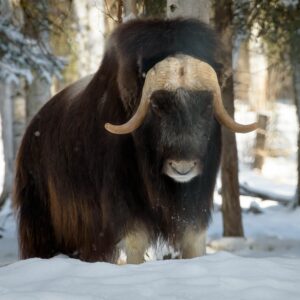 To date, there have been no attempts at ecological replacement within Canada, but this management technique has successfully been used to restore the ecological integrity of the Siberian steppe. On the steppe the tundra musk-oxen (Ovibos moschatus), a species native to Canada, was introduced to replace the extinct Siberian musk oxen (Ovibos palantis).
To date, there have been no attempts at ecological replacement within Canada, but this management technique has successfully been used to restore the ecological integrity of the Siberian steppe. On the steppe the tundra musk-oxen (Ovibos moschatus), a species native to Canada, was introduced to replace the extinct Siberian musk oxen (Ovibos palantis).
An ex situ population can be used to introduce a species outside of its native range to avoid extinction of populations elsewhere.
Example:
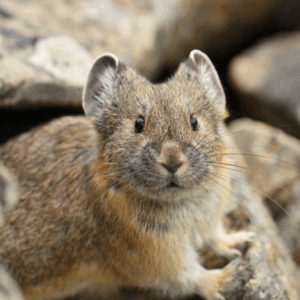 To date, assisted colonization has not been attempted Canadian animal, however this ex situ management strategy has been recommended for native species. One example is the American pika, where a combination of a restricted range, and limited dispersal capability preclude adaptation or dispersal as a means to deal with the impact of climate change.
To date, assisted colonization has not been attempted Canadian animal, however this ex situ management strategy has been recommended for native species. One example is the American pika, where a combination of a restricted range, and limited dispersal capability preclude adaptation or dispersal as a means to deal with the impact of climate change.
Rescue can involve establishing a temporary or a long-term ex situ population for a species or population of a species that is in imminent danger of extinction due to threats that cannot or will not be reversed in time (e.g. climate change), or have no current remedy (e.g. disease, wildlife trade).
Example 1:
 Ripley’s Aquariums: Smalltooth sawfish
Ripley’s Aquariums: Smalltooth sawfish
Recently, scientists have been investigating a troubling mass mortality event affecting smalltooth sawfish in Florida. In response, a groundbreaking rescue and rehabilitation initiative has been launched, involving a collaborative effort among NOAA, Florida Fish and Wildlife, and various academic and aquarium partners, including Ripley’s Aquariums. Ripley’s Aquariums is proud to support this critical effort by assisting with the transportation of rescued smalltooth sawfish for rehabilitation. Our commitment ensures that these endangered animals receive the care they need to recover and contribute to the ongoing conservation of their species.
Learn more about the Ripley's Aquarium Smalltooth sawfish Conservation.
Example 2:
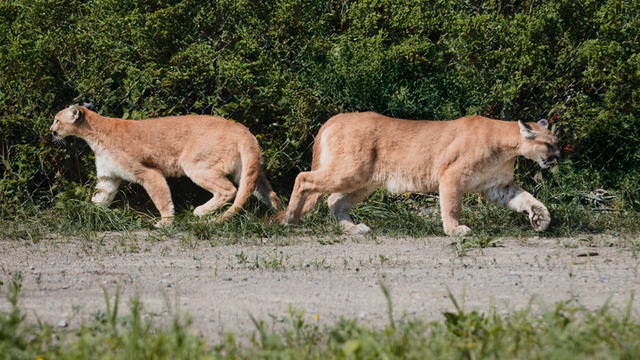
Parc Safari: Orphaned Cougars Move Into Parc Safari
When their mother was killed by a poacher near Canmore, Alberta, two orphaned cougar cubs faced certain death under provincial law. Thanks to the intervention of Parc Safari President & CEO Serge Lussier, and with support from partners in Calgary and Vancouver, the cubs were given a second chance.
They received months of care and rehabilitation while Parc Safari invested in a specially designed habitat, complete with climbing structures, enrichment, and safe space to grow. Today, the young cougars—now named Orion and Asha—live in a respectful, sustainable environment where they serve as ambassadors for wildlife conservation.
Keeping a healthy ex situ population over the long term helps protect a species from extinction if efforts in the wild don’t work. This "insurance population" can also give conservationists more options in the future. Having a stable population under human care means individuals can be used to support wild populations later if needed.
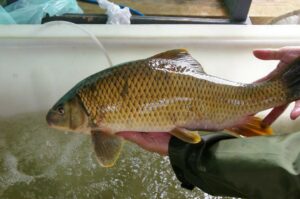
Example: A species that only exists in Quebec, the copper redhorse (Moxostoma hubbsi) is a fish threatened with extinction. This critical situation has prompted the Quebec Ministry of Sustainable Development, Environment, Wildlife and Parks to develop an artificial reproduction technique, in collaboration with the Biodome and the University of Quebec in Montreal. This work has led to the development of methods for hormonal induction, egg incubation and rearing of young. More specifically, the Biodôme plays an important role in the development of a refuge network ("genitarium") aimed at preserving the genetic variability of the species. Since 1994, young copper redhorses resulting from crossbreeding between different genitors have been kept at the Biodôme, the Aquarium du Québec and the Baldwin-Mills provincial fish farm.
Ex situ populations can include maintenance of a long-term ex situ population after extinction of all known wild populations, and as a preparation for reintroduction or assisted colonization if and when feasible.
Example:
 Once thought extinct, an isolated population of black-footed ferrets (Mustela nigripes) was discovered in 1981. The last remaining eighteen wild animals were caught to establish a breeding colony and for a few years black-footed ferrets lived strictly in captivity. Today, thanks to ongoing international collaborations, ferrets have been reintroduced to the wild at 28 sites in the US, Mexico and Canada. All wild black-footed ferrets are now descended from that initial ark population.
Once thought extinct, an isolated population of black-footed ferrets (Mustela nigripes) was discovered in 1981. The last remaining eighteen wild animals were caught to establish a breeding colony and for a few years black-footed ferrets lived strictly in captivity. Today, thanks to ongoing international collaborations, ferrets have been reintroduced to the wild at 28 sites in the US, Mexico and Canada. All wild black-footed ferrets are now descended from that initial ark population.
In Situ Conservation
In situ conservation involves protecting species within their home range. This includes efforts such as monitoring wild populations and preserving the natural environments they rely on. By working directly in the field, conservationists help maintain healthy ecosystems and support species in the wild.
In Situ Conservation at CAZA Accredited Institutions
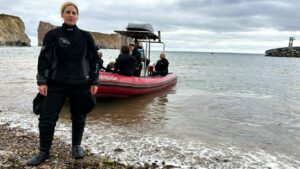
In mid-June, divers from the Aquarium du Québec embarked on a unique expedition in the Gulf of St. Lawrence, encountering seals, jellyfish, anemones, crabs, and a wide range of marine life. This expedition is part of a five-year research project aimed at studying the impact of recreational diving on marine biodiversity near Bonaventure Island, a popular site in Gaspésie.
The project is a collaboration between the Aquarium du Québec, Parc national de l’Île-Bonaventure-et-du-Rocher-Percé (both part of Sépaq), and the University of Montreal. Each year, teams conduct underwater surveys in June and September—before and after peak diving season—to inventory the marine species present.
By the end of the project in 2027, researchers aim to understand whether increased diving activity correlates with changes in biodiversity. If negative impacts are identified, the team will issue recommendations to protect the site.
This important initiative reflects the Aquarium’s strong commitment to aquatic ecosystem health and biodiversity protection. It has been featured on Radio-Canada’s La Semaine Verte and was recognized with the Peter Karsten In-situ Conservation Award.
Watch the report from La Semaine verte.
Read the digital story about this vast diving research project.
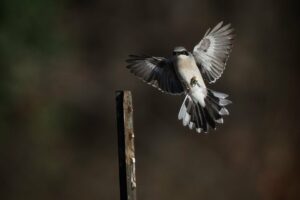 The recovery effort for Loggerhead Shrike relies on a coordinated colour banding effort, combined with field surveys, to gather data on population size, distribution, fertility, and survival of adults and young on a yearly basis. Working with Wildlife Preservation Canada (WPC), African Lion Safari prepared a colour banding protocol for the species that has been adopted by the North American Banding Council and serves as a bander for wild shrike in Ontario. This colour banding system, by which long-range movements can be tracked, allows partial band recoveries to provide useful information.
The recovery effort for Loggerhead Shrike relies on a coordinated colour banding effort, combined with field surveys, to gather data on population size, distribution, fertility, and survival of adults and young on a yearly basis. Working with Wildlife Preservation Canada (WPC), African Lion Safari prepared a colour banding protocol for the species that has been adopted by the North American Banding Council and serves as a bander for wild shrike in Ontario. This colour banding system, by which long-range movements can be tracked, allows partial band recoveries to provide useful information.
Read more about the banding here.
Learn more about African Lion Safari's Eastern Loggerhead Shrike Conservation Programme here.

Wildlife Health Centre
The Fawcett Family Wildlife Health Centre at BC Wildlife Park is the only full-service wildlife rehabilitation facility in the Southern Interior. Each year, more than 400 animals — including birds, mammals, reptiles, and amphibians — are admitted for care. The centre is staffed by the Park’s Animal Care team and supported by a roster of dedicated volunteers, all working to rehabilitate orphaned and injured wildlife.
Whenever possible, animals are released back into their natural environments in coordination with the Ministry of Forests, Lands, Natural Resource Operations, and Rural Development. By combining advanced veterinary care with a commitment to conservation, the Wildlife Health Centre plays a vital role in supporting both individual animal welfare and broader ecosystem health.
Watch BC Wildlife Parks Video about the Fawcett Family Wildlife Health Centre here.

Grizzly Bear Rescue
Grizzly bear cubs that lose their mothers have little chance of survival on their own in the wild. When orphaned cubs were discovered, BC Wildlife Park provided them with a safe environment, specialized care, and long-term support. At the Park, the bears received proper nutrition, veterinary attention, and enrichment that allowed them to grow and thrive in human care.
Beyond the direct welfare of the cubs, this rescue highlights the challenges wild grizzlies faced, from habitat loss to human-wildlife conflict. By caring for orphaned bears and sharing their stories, BC Wildlife Park raises awareness about conservation issues and inspires the public to take action to protect grizzly populations and their ecosystems.
Watch the Full Video About BC Wildlife Park's Grizzly Bear Rescue Story here.
A One Plan Approach
In situ and ex situ strategies are most effective when used together. Through a One Plan Approach, conservationists combine expertise and resources from both settings to support species recovery, ensuring long-term sustainability in the wild and under human care.
You Can Make a Difference
By visiting CAZA-accredited zoos and aquariums, you help support vital conservation efforts – both in Canada and around the world. Your visit contributes directly to research, education, and the protection of wildlife and their habitats.




